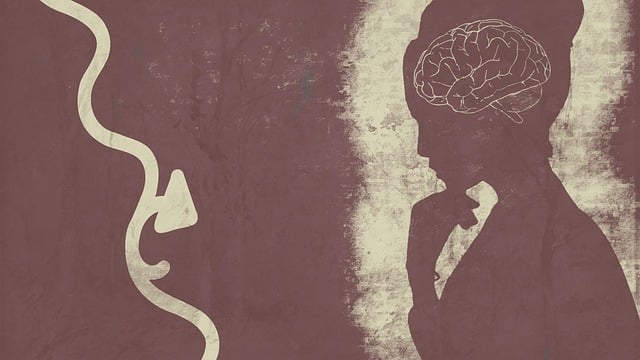Westminster Adolescent Therapy: Mastering Anxiety Management Techniques for Teens
Westminster Adolescent and Teen Therapy offers specialized therapy for anxiety management, targeting…….
In the intricate landscape of mental health support, tailored interventions for adolescents and teenagers have emerged as a critical domain. Westminster Adolescent and Teen Therapy (WATT) represents a specialized approach, offering evidence-based strategies to address the unique challenges faced by young individuals during their formative years. This article aims to provide an in-depth examination of WATT, exploring its definition, global reach, economic implications, technological integrations, regulatory frameworks, and future prospects. By delving into these aspects, we will uncover the significance of this therapeutic practice and its potential to shape the well-being of adolescents worldwide.
Westminster Adolescent and Teen Therapy is a comprehensive, client-centered approach designed to support individuals aged 13 to 19 through various psychological, emotional, and behavioral challenges. It draws from a range of therapeutic modalities, including cognitive-behavioral therapy (CBT), mindfulness practices, family therapy, and solutions-focused brief therapy. The core components of WATT include:
The concept of WATT has evolved over several decades, drawing from pioneering works in adolescent psychology and mental health. Its roots can be traced back to the mid-20th century when researchers and clinicians began recognizing the distinct needs of teenagers, leading to the development of specialized therapeutic approaches. Over time, WATT has grown in popularity and effectiveness, becoming an essential component of comprehensive healthcare systems worldwide.
The significance of WATT lies in its ability to:
Westminster Adolescent and Teen Therapy has garnered global recognition, with its principles and practices adopted in various countries across different continents. The international influence can be attributed to several factors:
The implementation and impact of WATT vary across regions, influenced by cultural, economic, and social factors:
| Region | Trends and Observations |
|---|---|
| North America | High adoption rates, with many private practices and clinics offering WAT services. Strong emphasis on research and evidence-based practice. |
| Europe | Diverse approaches, with some countries integrating WATT into their national healthcare systems. Focus on early intervention and prevention. |
| Asia-Pacific | Increasing awareness, particularly in urban areas. Cultural sensitivity is a key consideration in adapting WATT for local populations. |
| Middle East and Africa | Growing interest, driven by the recognition of mental health as a priority. Limited resources and infrastructure pose challenges to implementation. |
The market for adolescent and teen therapy services has experienced significant growth, fueled by rising awareness of mental health issues among young people and increased funding for youth-focused programs. WATT, as a specialized service, operates within this broader market, with key dynamics including:
Investment in WATT comes from various sources, including:
The economic impact of WATT is multifaceted:
The digital revolution has significantly impacted WATT, giving rise to innovative therapy platforms that expand access to services:
Technological advancements in WATT have led to:
In the future, technology is poised to:
The regulation and governance of WAT vary across jurisdictions, reflecting the diverse cultural and legal landscapes:
Government policies and legislative frameworks influence the delivery and accessibility of WAT:
Despite its proven benefits, WAT faces several challenges:
Addressing these challenges requires strategic interventions:
Challenge: High rates of youth violence and substance abuse in underprivileged neighborhoods of NYC.
Solution: UASP implemented a comprehensive WAT program, combining individual therapy, group support, and family engagement.
Outcomes: A significant decrease in violent incidents among participants, improved school attendance, and enhanced coping mechanisms for stress and emotions.
Context: Limited mental health resources in rural Oregon, leading to long travel distances for adolescents requiring therapy.
Approach: RTMHI introduced online WAT sessions and trained local healthcare providers to offer basic therapeutic support.
Impact: Increased access to mental health services, reduced wait times, and improved treatment retention rates among rural adolescents.
Mission: To provide WAT to adolescents in low-resource settings worldwide.
Strategy: GTTA established international partnerships, sharing resources, training materials, and expertise. They organized virtual workshops and implemented cultural adaptation guidelines for WAT.
Achievements: Successful implementation of WAT in several countries, leading to improved mental health outcomes for adolescents, and fostering a global network of mental health professionals.
The future of WAT holds immense potential in several areas:
Several emerging trends are shaping the future of WAT:
To capitalize on these trends, practitioners and policymakers should:
Westminster Adolescent and Teen Therapy represents a powerful approach to supporting young individuals through their transformative years. By addressing the unique challenges faced by adolescents, WAT promotes resilience, enhances well-being, and paves the way for successful adult lives. The global impact of this therapeutic practice is evident, with its principles adapted and implemented in diverse cultural settings.
As we look ahead, technology, policy reforms, and a growing recognition of adolescent mental health needs will shape the future of WAT. By overcoming challenges, embracing innovation, and fostering collaboration, this field can ensure that adolescents worldwide have access to the specialized support they need to thrive.
Q: What makes Westminster Adolescent and Teen Therapy unique?
A: WAT is unique in its holistic approach, integrating individual therapy, group sessions, and family involvement to address the multifaceted needs of adolescents.
Q: How can WAT help prevent adult mental health issues?
A: By providing early intervention and equipping adolescents with coping skills, WAT reduces the risk of developing severe mental health disorders later in life.
Q: Are there cultural considerations when implementing WAT?
A: Yes, adapting WAT to local cultures is essential for its effectiveness. Therapists must respect and incorporate cultural norms while providing evidence-based therapy.
Q: Can technology replace the need for in-person therapy sessions?
A: While digital tools enhance access and support, they are not a replacement for in-person therapy. Face-to-face interactions remain crucial for building therapeutic relationships and addressing complex issues.
Q: What role do policymakers play in supporting WAT?
A: Policymakers can influence the availability and accessibility of WAT through funding allocation, regulatory frameworks, and initiatives to reduce mental health stigma.

Westminster Adolescent and Teen Therapy offers specialized therapy for anxiety management, targeting…….